categorization
- 格式:dps
- 大小:1.19 MB
- 文档页数:17
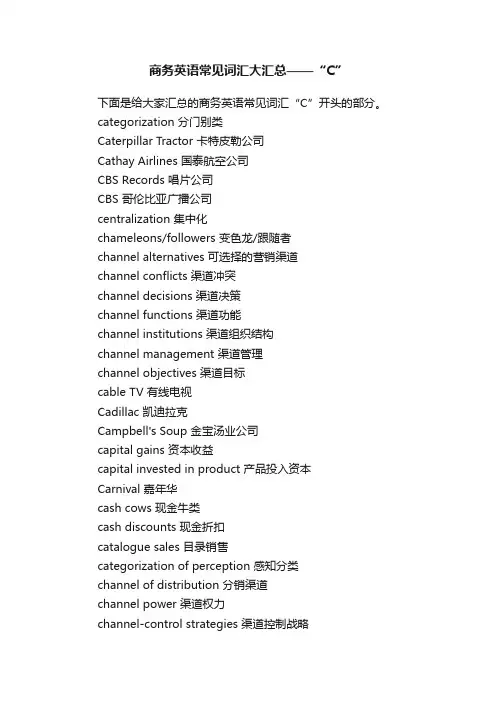
商务英语常见词汇大汇总——“C”下面是给大家汇总的商务英语常见词汇“C”开头的部分。
categorization 分门别类Caterpillar Tractor 卡特皮勒公司Cathay Airlines 国泰航空公司CBS Records 唱片公司CBS 哥伦比亚广播公司centralization 集中化chameleons/followers 变色龙/跟随者channel alternatives 可选择的营销渠道channel conflicts 渠道冲突channel decisions 渠道决策channel functions 渠道功能channel institutions 渠道组织结构channel management 渠道管理channel objectives 渠道目标cable TV 有线电视Cadillac 凯迪拉克Campbell's Soup 金宝汤业公司capital gains 资本收益capital invested in product 产品投入资本Carnival 嘉年华cash cows 现金牛类cash discounts 现金折扣catalogue sales 目录销售categorization of perception 感知分类channel of distribution 分销渠道channel power 渠道权力channel-control strategies 渠道控制战略channel-design decisions 渠道设计决策channel-management decisions 渠道管理决策channels of communication 传播渠道Charles Snow 查尔斯·斯诺Cherokee 切诺基chevrolet 雪佛莱choice criteria 选择标准Christian Dior 克里斯汀·迪奥(世界著名时装品牌) Chrysler 克莱斯勒Citi Corp 花旗银行closing a sale 结束销售clothing retailers 服装零售商CNN 美国有线新闻网co-branding 联合品牌code of ethics (职业)道德标准coercive power 强制权cognitive dissonance 认识的不协调Colgate-Palmolive 高露洁collection of data 数据收集collection 收款co-marketing alliances 联合营销联盟combination compensation plan 结合式薪酬方案Comdex 计算机展销会commercialization 商业化commitment 承诺communication channels 传播渠道communication process 传播过程communication 信息交流/沟通communications media 传播媒体company personnel 公司员工competitive parity promotion budgeting 竞争均势促销预算法competitive strategy 竞争战略competitive strength 竞争优势/能力competitor analysis 竞争者分析complaint handling 投诉处理component materials and parts markets 组成材料和零部件市场computerized ordering 计算机化的订购conclusive research 确定性研究conditions of demand 需求情况conflict and resolution strategies 冲突和解决战略conformance to specifications 与规格一致conformance 一致性confrontation strategy 对抗战略conjoint measurement 联合测度法conjunctive model 联合模型consumer decision-making 消费者(购买)决策consumer goods channels 消费品分销渠道Consumer Goods Pricing Act, USA 美国消费品定价法案consumer goods 消费品consumer markets 消费品市场consumer needs 消费者需求consumer packaged-goods firms 消费者包装食品公司consumer promotion 消费者促销consumer tests 消费者测试consumer/household market 消费者/家庭市场consumers' perceptions 消费者感知consumption 消费contests 竞赛contingency planning 权变计划contract construction 契约建筑业contract manufacturing 契约制造业contraction/strategic withdrawal strategy 收缩/战略性撤退战略contractual entry modes 契约式进入模式corollary-data method 推定数据法corporate HQ 公司总部corporate scope 公司(经营)范围corporate strategy 公司战略corporate vertical marketing systems 公司式垂直营销系统corporate/institutional advertising 团体/社会公共机构广告corrective action 矫正行动cost analysis 成本分析cost effectiveness 成本有效性contractual vertical marketing systems 合约式垂直营销系统contribution margin analysis 边际贡献(贡献毛利)分析contributrion margin 边际贡献control strategies 控制战略convenience food stores 便利食品商店convenience goods 便利品convenience 服务的便利性Cool Whip 清凉维普co-operative advertising 合作性广告co-ordination and conflict resolution 协调与冲突解决co-production 合作生产core benefit proposition (CBP) 核心利益方案/提议cost leadership strategy 成本领先战略cost of capital 资本成本cost of goods sold (COGS) 产品销售成本cost reductions 降低成本产品cost-and-volume relationship 成本-数量关系Compaq 康柏comparative advertisements 比较广告comparison of brands 品牌比较compensation deals 补偿处理compensation plan 酬金方案compensation/rewards 酬金/奖励compensatory 补偿性的competition and industry evolution 竞争和行业演变competition-orientated pricing 竞争导向定价法competitive advantage 竞争优势competitive (supply-side) evolution 竞争(供方)演变competitive factors 竞争因素competitive intelligence 竞争情报/信息cost-oriented pricing 成本导向定价法cost-plus/mark-up pricing 成本加成/溢价定价法costs and benefits of marketing functions 营销职能的成本和效益costs of competitors 竞争者成本costs of distribution 分销成本countertrade 对等贸易customer loyalty 顾客忠诚度customer need 顾客需要customer organization of sales force 按客户组织销售队伍customer retention 顾客维系/保留customer satisfaction 顾客满意度customer segment pricing 顾客细分市场定价customer service 顾客服务customer-oriented pricing 顾客导向定价法customers' perception 顾客感知customers' preferences 顾客偏好customers' price sensitivity 顾客的价格敏感度customizing 定制coupons 优惠券courtesy 礼貌coverage of geographic market 地域性市场的范围coverage of relevant retailers 相关零售商的销售范围credibility 信誉credit terms 信贷条款critical assumptions 关键假设cross-elasticity 交叉弹性customary pricing 习惯性定价法customer analysis 顾客分析customer contact 顾客接触customer demand 顾客需求customer intimacy 顾客亲密度。
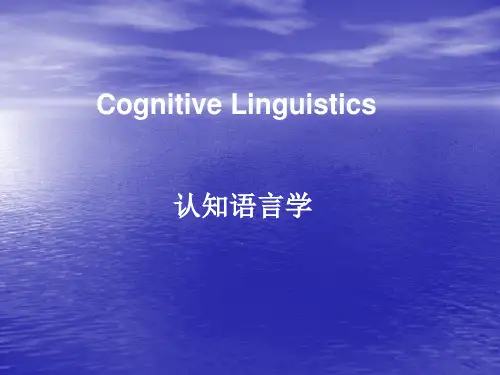
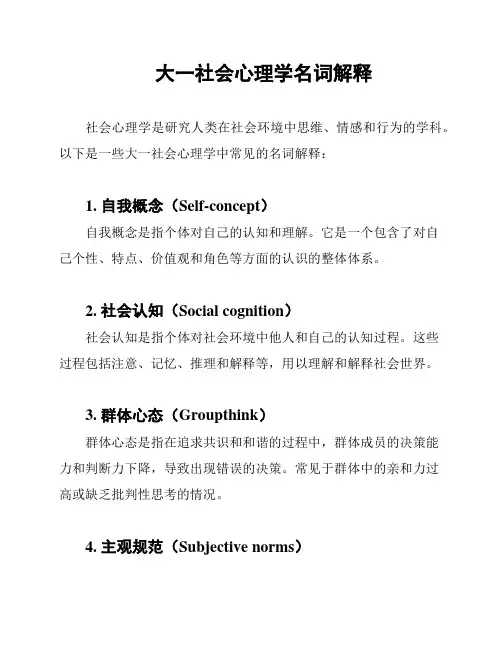
大一社会心理学名词解释
社会心理学是研究人类在社会环境中思维、情感和行为的学科。
以下是一些大一社会心理学中常见的名词解释:
1. 自我概念(Self-concept)
自我概念是指个体对自己的认知和理解。
它是一个包含了对自
己个性、特点、价值观和角色等方面的认识的整体体系。
2. 社会认知(Social cognition)
社会认知是指个体对社会环境中他人和自己的认知过程。
这些
过程包括注意、记忆、推理和解释等,用以理解和解释社会世界。
3. 群体心态(Groupthink)
群体心态是指在追求共识和和谐的过程中,群体成员的决策能
力和判断力下降,导致出现错误的决策。
常见于群体中的亲和力过
高或缺乏批判性思考的情况。
4. 主观规范(Subjective norms)
主观规范是个体对别人期望自己采取某种行为的信念和看法。
这种规范可以来自家庭、朋友、社会和文化等方面的影响。
5. 关系辨析(Social categorization)
关系辨析是指个体在社会中将自己和他人归类到特定的群体或类别中的认知过程。
这种归类可以基于共同特征、身份、性别、年龄等因素。
6. 社会影响(Social influence)
社会影响是指他人对个体行为和态度的影响。
这包括了从他人那里获得信息、模仿他人行为和遵守社会规范等。
以上是对一些大一社会心理学中常见名词的简要解释。
这些名词帮助我们了解人类在社会中的思维和行为,并对人际关系和社会互动有更深入的理解。
`(800字)`。
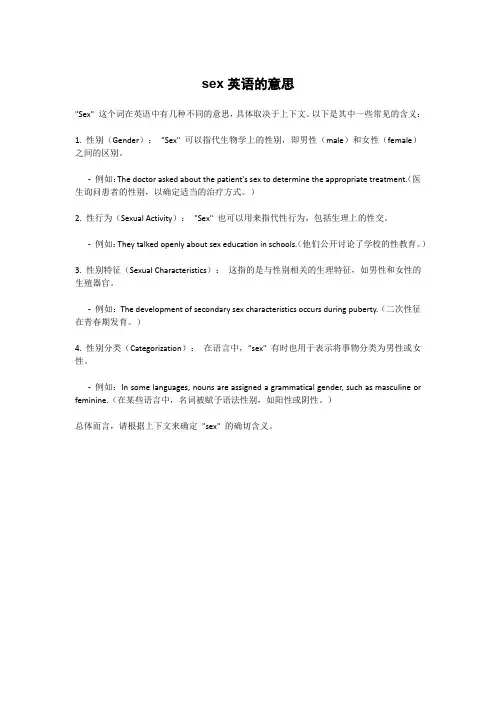
sex英语的意思"Sex" 这个词在英语中有几种不同的意思,具体取决于上下文。
以下是其中一些常见的含义:1. 性别(Gender):"Sex" 可以指代生物学上的性别,即男性(male)和女性(female)之间的区别。
-例如:The doctor asked about the patient's sex to determine the appropriate treatment.(医生询问患者的性别,以确定适当的治疗方式。
)2. 性行为(Sexual Activity):"Sex" 也可以用来指代性行为,包括生理上的性交。
-例如:They talked openly about sex education in schools.(他们公开讨论了学校的性教育。
)3. 性别特征(Sexual Characteristics):这指的是与性别相关的生理特征,如男性和女性的生殖器官。
-例如:The development of secondary sex characteristics occurs during puberty.(二次性征在青春期发育。
)4. 性别分类(Categorization):在语言中,"sex" 有时也用于表示将事物分类为男性或女性。
-例如:In some languages, nouns are assigned a grammatical gender, such as masculine or feminine.(在某些语言中,名词被赋予语法性别,如阳性或阴性。
)总体而言,请根据上下文来确定"sex" 的确切含义。
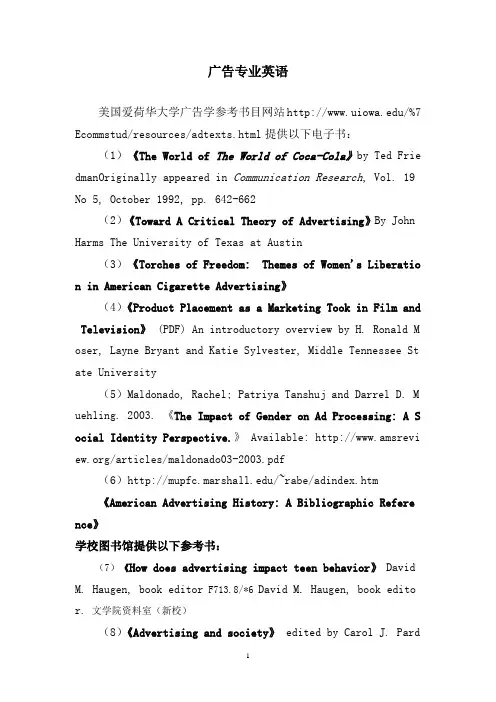
广告专业英语美国爱荷华大学广告学参考书目网站/%7 Ecommstud/resources/adtexts.html提供以下电子书:(1)《The World of The World of Coca-Cola》by Ted Frie dmanOriginally appeared in Communication Research, Vol. 19 No 5, October 1992, pp. 642-662(2)《Toward A Critical Theory of Advertising》By John Harms The University of Texas at Austin(3)《Torches of Freedom: Themes of Women's Liberatio n in American Cigarette Advertising》(4)《Product Placement as a Marketing Took in Film and Television》 (PDF) An introductory overview by H. Ronald M oser, Layne Bryant and Katie Sylvester, Middle Tennessee St ate University(5)Maldonado, Rachel; Patriya Tanshuj and Darrel D. M uehling. 2003. 《The Impact of Gender on Ad Processing: A S ocial Identity Perspective.》 Available: http://www.amsrevi /articles/maldonado03-2003.pdf(6)/~rabe/adindex.htm《American Advertising History: A Bibliographic Refere nce》学校图书馆提供以下参考书:(7)《How does advertising impact teen behavior》David M. Haugen, book editor F713.8/*6 David M. Haugen, book edito r.文学院资料室(新校)(8)《Advertising and society》 edited by Carol J. Pardun. F713.80/*5外国语学院资料室(新校)(9)《Advertising 》William Wells, John Burnett, Sandra Moriarty = 广告学 : 原理和实务 / 威廉·韦尔斯, 约翰·伯内特,桑德拉·莫里亚蒂著. 北京 : 中国人民大学出版社, 2005. F713. 80/*3=6 经济类图书(新校)(10)《Advertising and integrated brand promotion 》 Th omas C. O'Guinn, Chris T. Allen, Richard J. Semenik = 广告学 / 托马斯·C.奥吉恩, 克里斯·T.艾伦, 理查德·J.西曼尼克著. 大连 : 东北财经大学出版社, 2004.F713.80/*1经济类图书(新校)(11)《Advertising, promotion, & supplemental aspects o f integrated marketing communications》Terence A. Shimp. 北京 : 北京大学出版社 ; 2004. 当代全美MBA经典教材书系(英文影印版) F713.50/*2经济类图书(新校)(12)《Advertising》 Sheils Malovany-Chevallier H319.4/ *70外文.医学书库(北校)(13)《Advertising media planning 》Larry D. Kelley an d Donald W. Jugenheimer. F713.8/*4=2文学院资料室(新校)(14)《Advertising and new media 》 Christina Spurgeon. F713.8/*5文学院资料室(新校)广告专业英语词汇注:红字部分为重点记忆词汇。
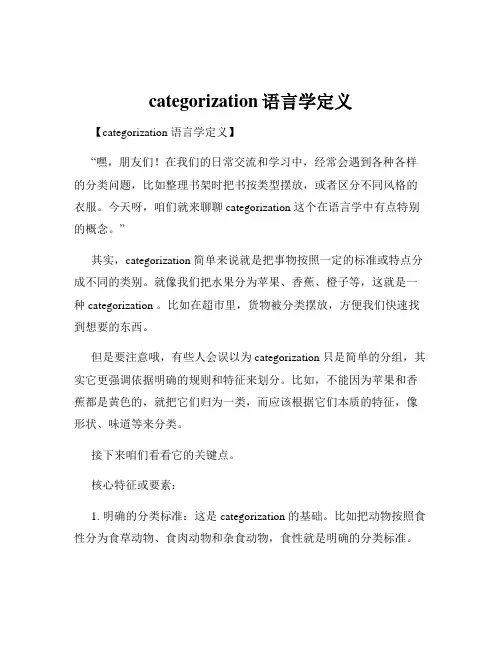
categorization语言学定义【categorization 语言学定义】“嘿,朋友们!在我们的日常交流和学习中,经常会遇到各种各样的分类问题,比如整理书架时把书按类型摆放,或者区分不同风格的衣服。
今天呀,咱们就来聊聊 categorization 这个在语言学中有点特别的概念。
”其实,categorization 简单来说就是把事物按照一定的标准或特点分成不同的类别。
就像我们把水果分为苹果、香蕉、橙子等,这就是一种 categorization 。
比如在超市里,货物被分类摆放,方便我们快速找到想要的东西。
但是要注意哦,有些人会误以为 categorization 只是简单的分组,其实它更强调依据明确的规则和特征来划分。
比如,不能因为苹果和香蕉都是黄色的,就把它们归为一类,而应该根据它们本质的特征,像形状、味道等来分类。
接下来咱们看看它的关键点。
核心特征或要素:1. 明确的分类标准:这是 categorization 的基础。
比如把动物按照食性分为食草动物、食肉动物和杂食动物,食性就是明确的分类标准。
2. 系统性:分类要有条理和逻辑。
像把书籍按照文学、历史、科学等大类,然后再细分,这就是系统性的体现。
3. 可变性:分类不是一成不变的。
随着新事物的出现或者我们对事物认识的深入,分类可能会改变。
比如说以前对于音乐的分类比较简单,现在随着音乐风格的多样化,分类也更加细致和丰富了。
容易混淆的概念:Categorization 和 classification 这两个词很相似,但也有区别。
Categorization 更侧重于基于事物内在的本质特征进行分类,比较细致和深入。
而 classification 则更侧重于从宏观的角度进行大致的分类,相对来说没有那么细致。
比如说在生物学中,对物种的 categorization 会非常详细,考虑到基因、生态等多个方面;而 classification 可能只是简单地分为动物、植物、微生物等大类别。
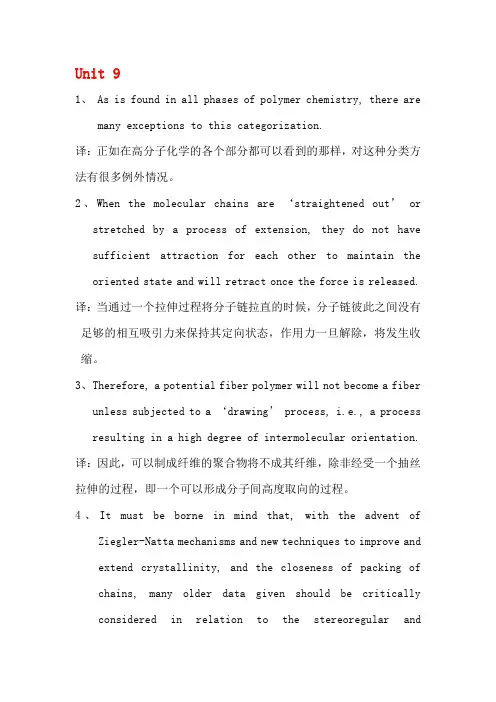
Unit 91、As is found in all phases of polymer chemistry, there aremany exceptions to this categorization.译:正如在高分子化学的各个部分都可以看到的那样,对这种分类方法有很多例外情况。
2、When the molecular chains are ‘straightened out’orstretched by a process of extension, they do not have sufficient attraction for each other to maintain the oriented state and will retract once the force is released. 译:当通过一个拉伸过程将分子链拉直的时候,分子链彼此之间没有足够的相互吸引力来保持其定向状态,作用力一旦解除,将发生收缩。
3、Therefore, a potential fiber polymer will not become a fiberunless subjected to a ‘drawing’process, i.e., a process resulting in a high degree of intermolecular orientation. 译:因此,可以制成纤维的聚合物将不成其纤维,除非经受一个抽丝拉伸的过程,即一个可以形成分子间高度取向的过程。
4、It must be borne in mind that, with the advent ofZiegler-Natta mechanisms and new techniques to improve and extend crystallinity, and the closeness of packing of chains, many older data given should be critically considered in relation to the stereoregular andcrystalline structure.译:必须牢牢记住,随着Ziegler-Natta机理出现,以及随着提高结晶度和提高链的堆砌密度的新方法的出现,对许多过去已得到的关于空间结构和晶体结构旧的资料,应当批判的接受。
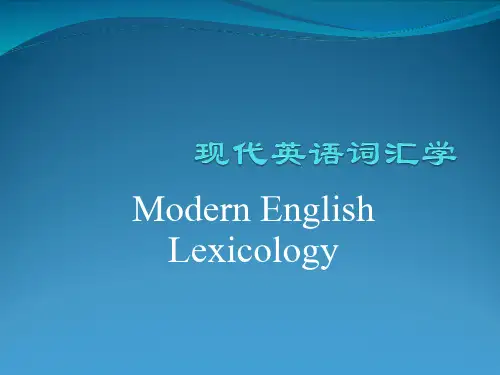
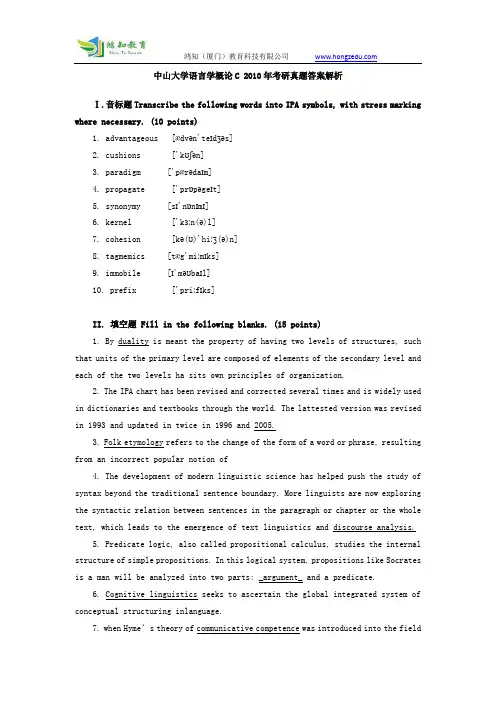
中山大学语言学概论C 2010年考研真题答案解析Ⅰ.音标题Transcribe the following words into IPA symbols, with stress marking where necessary. (10 points)1. advantageous [ædvən'teɪdʒəs]2. cushions ['kʊʃən]3. paradigm ['pærədaɪm]4. propagate ['prɒpəgeɪt]5. synonymy [sɪ'nɒnɪmɪ]6. kernel ['kɜːn(ə)l]7. cohesion [kə(ʊ)'hiːʒ(ə)n]8. tagmemics [tæg'miːmɪks]9. immobile [ɪ'məʊbaɪl]10. prefix ['priːfɪks]II. 填空题 Fill in the following blanks. (15 points)1. By duality is meant the property of having two levels of structures, such that units of the primary level are composed of elements of the secondary level and each of the two levels ha sits own principles of organization.2. The IPA chart has been revised and corrected several times and is widely used in dictionaries and textbooks through the world. The lattested version was revised in 1993 and updated in twice in 1996 and 2005.3. Folk etymology refers to the change of the form of a word or phrase, resulting from an incorrect popular notion of4. The development of modern linguistic science has helped push the study of syntax beyond the traditional sentence boundary. More linguists are now exploring the syntactic relation between sentences in the paragraph or chapter or the whole text, which leads to the emergence of text linguistics and discourse analysis.5. Predicate logic, also called propositional calculus, studies the internal structure of simple propositions. In this logical system, propositions like Socrates is a man will be analyzed into two parts: _argument_ and a predicate.6. Cognitive linguistics seeks to ascertain the global integrated system of conceptual structuring inlanguage.7. when Hyme’s theory of communicative competence was introduced into the fieldas an antagonism to the traditional philosophy in language teaching, language teachers began to pay more attention to the question of how their students as active and successful language users in real language context.8. Levinson presents his three heuristics, which are derived from Conversational Implicature.9. The form thou in Early Modern English, the second person singular pronoun equivalent to the French form tu, was used to signal intimacy/respect.10. Computational linguistics, dealing with computer processing of human language, includes programmed instruction, speech synthesis and recognition, automatic translation, and text processing and communication between people and compuetrs.11. Nunan (1983:3)suggests that a curriculum is concerned with making general statements about language learning, learning purpose, and experience, and the relationship between teachers and learners, whereas a syllabus is more localized and is based on the accounts and records of what actually happens at the classroom level as teachers and students apply a curriculum to their situation.12. Saussure’s ideas we re developed along three lines: linguistics, sociology, and psychology.13. The Prague School practiced a special style of synchronic linguistics, and its most important contribution to linguistics is that it sees language in terms of function.14. In SFG, Mental process express such mental phenomena as “perception”, reaction and cognition.15. Bloomfield’s language(1993) was once held as the model of scientific methodology and greatest work in linguistics on both sides of the Atlantic in the 20th century.III. 名词解释Define the following terms. (50 points)1. Macrolinguistics【考察知识点+解题思路】本题考查的知识点是宏观语言学的定义。
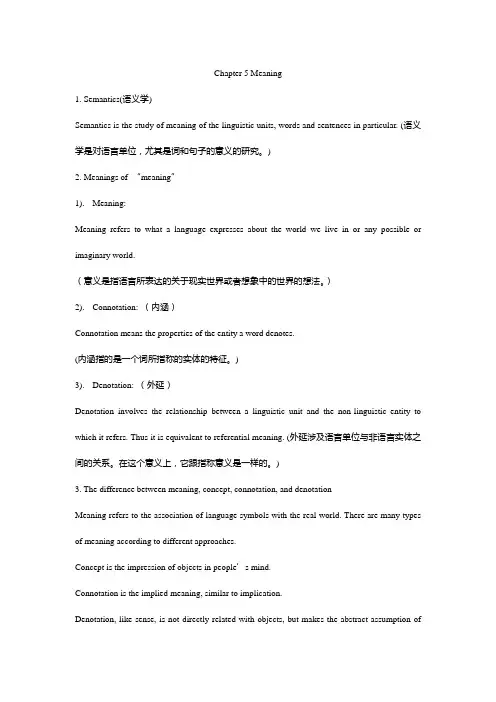
Chapter 5 Meaning1. Semantics(语义学)Semantics is the study of meaning of the linguistic units, words and sentences in particular. (语义学是对语言单位,尤其是词和句子的意义的研究。
)2. Meanings of “meaning”1). Meaning:Meaning refers to what a language expresses about the world we live in or any possible or imaginary world.(意义是指语言所表达的关于现实世界或者想象中的世界的想法。
)2). Connotation: (内涵)Connotation means the properties of the entity a word denotes.(内涵指的是一个词所指称的实体的特征。
)3). Denotation: (外延)Denotation involves the relationship between a linguistic unit and the non-linguistic entity to which it refers. Thus it is equivalent to referential meaning. (外延涉及语言单位与非语言实体之间的关系。
在这个意义上,它跟指称意义是一样的。
)3. The difference between meaning, concept, connotation, and denotationMeaning refers to the association of language symbols with the real world. There are many types of meaning according to different approaches.Concept is the impression of objects in people’s mind.Connotation is the implied meaning, similar to implication.Denotation, like sense, is not directly related with objects, but makes the abstract assumption ofthe real world.4. The referential theory1). DefinitionThe theory of meaning which relates the meaning of a word to the thing it refers to, or stands for, is known as the referential theory.(把词语意义跟它所指称或代表的事物联系起来的理论,叫做指称理论)2). The semantic triangle (语义三角)Ogden and Richards presented the classic “Semantic Triangle”as manifested in the following diagram。
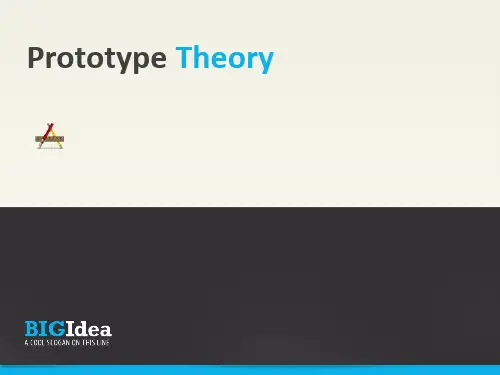
专业英语accordion 手风琴activation 活化(作用)addition polymer 加成聚合物,加聚物aggravate 加重,恶化agitation 搅拌agrochemical 农药,化肥Alfin catalyst 醇(碱金属)烯催化剂align 排列成行aliphatic 脂肪(族)的alkali metal 碱金属allyl 烯丙基aluminum alkyl 烷基铝amidation 酰胺化(作用)amino 氨基,氨基的amorphous 无定型的,非晶体的anionic 阴(负)离子的antioxidant 抗氧剂antistatic agent 抗静电剂aromatic 芳香(族)的arrangement (空间)排布,排列atactic 无规立构的attraction 引力,吸引backbone 主链,骨干behavior 性能,行为biological 生物(学)的biomedical 生物医学的bond dissociation energy 键断裂能boundary 界限,范围brittle 脆的,易碎的butadiene 丁二烯butyllithium 丁基锂calendering 压延成型calendering 压延carboxyl 羧基carrier 载体catalyst 催化剂,触媒categorization 分类(法)category 种类,类型cation 正[阳]离子cationic 阳(正)离子的centrifuge 离心chain reaction 连锁反应chain termination 链终止char 炭characterize 表征成为…的特征chilled water 冷冻水chlorine 氯(气)coating 涂覆cocatalyst 助催化剂coil 线团coiling 线团状的colligative 依数性colloid 胶体commence 开始,着手common salt 食盐complex 络合物compliance 柔量condensation polymer 缩合聚合物,缩聚物conductive material 导电材料conformation 构象consistency 稠度,粘稠度contaminant 污物contour 外形,轮廓controlled release 控制释放controversy 争论,争议conversion 转化率conversion 转化copolymer 共聚物copolymerization 共聚(合)corrosion inhibitor 缓释剂countercurrent 逆流crosslinking 交联crystal 基体,结晶crystalline 晶体,晶态,结晶的,晶态的crystalline 结晶的crystallinity 结晶性,结晶度crystallite 微晶decomposition 分解defect 缺陷deformability 变形性,变形能力deformation 形变deformation 变形degree of polymerization 聚合度dehydrogenate 使脱氢density 密度depolymerization 解聚deposit 堆积物,沉积depropagation 降解dewater 脱水diacid 二(元)酸diamine 二(元)胺dibasic 二元的dieforming 口模成型diffraction 衍射diffuse 扩散dimension 尺寸dimensional stability 尺寸稳定性dimer 二聚物(体)diol 二(元)醇diolefin 二烯烃disintegrate 分解,分散,分离dislocation 错位,位错dispersant 分散剂dissociate 离解dissolution 溶解dissolve 使…溶解distort 使…变形,扭曲double bond 双键dough (生)面团,揉好的面drug 药品,药物elastic modulus 弹性模量elastomer 弹性体eliminate 消除,打开,除去elongation 伸长率,延伸率entanglement 缠结,纠缠entropy 熵equilibrium 平衡esterification 酯化(作用)evacuate 撤出extrusion 注射成型extrusion 挤出fiber 纤维flame retardant 阻燃剂flexible 柔软的flocculating agent 絮凝剂folded-chain lamella theory 折叠链片晶理论formulation 配方fractionation 分级fragment 碎屑,碎片fringed-micelle theory 缨状微束理论functional group 官能团functional polymer 功能聚合物functionalized polymer 功能聚合物gel 凝胶glass transition temperature 玻璃化温度glassy 玻璃(态)的glassy 玻璃态的glassy state 玻璃态globule 小球,液滴,颗粒growing chain 生长链,活性链gyration 旋转,回旋hardness 硬度heat transfer 热传递heterogeneous 不均匀的,非均匀的hydocy acid 羧基酸hydrogen 氢(气)hydrogen bonding 氢键hydrostatic 流体静力学hydroxyl 烃基hypothetical 假定的,理想的,有前提的ideal 理想的,概念的imagine 想象,推测imbed 嵌入,埋入,包埋imperfect 不完全的improve 增进,改善impurity 杂质indispensable 不了或缺的infrared spectroscopy 红外光谱法ingredient 成分initiation (链)引发initiator 引发剂inorganic polymer 无机聚合物interaction 相互作用interchain 链间的interlink 把…相互连接起来连接intermittent 间歇式的intermolecular (作用于)分子间的intrinsic 固有的ion 离子ion exchange resin 离子交换树脂ionic 离子的ionic polymerization 离子型聚合irradiation 照射,辐射irregularity 不规则性,不均匀的isobutylene 异丁烯isocyanate 异氰酸酯isopropylate 异丙醇金属,异丙氧化金属isotactic 等规立构的isotropic 各项同性的kinetic chain length 动力学链长kinetics 动力学latent 潜在的light scattering 光散射line 衬里,贴面liquid crystal 液晶macromelecule 大分子,高分子matrix 基体,母体,基质,矩阵mean-aquare end-to-end distance 均方末端距mechanical property 力学性能,机械性能mechanism 机理medium 介质中等的,中间的minimise 最小化minimum 最小值,最小的mo(u)lding 模型mobility 流动性mobilize 运动,流动model 模型modify 改性molecular weight 分子量molecular weight distribution 分子量分布molten 熔化的monofunctional 单官能度的monomer 单体morphology 形态(学)moulding 模塑成型neutral 中性的nonelastic 非弹性的nuclear magnetic resonance 核磁共振nuclear track detector 核径迹探测器number average molecular weight 数均分子量occluded 夹杂(带)的olefinic 烯烃的optimum 最佳的,最佳值[点,状态]orient 定向,取向orientation 定向oxonium 氧鎓羊packing 堆砌parameter 参数parison 型柸pattern 花纹,图样式样peculiarity 特性pendant group 侧基performance 性能,特征permeability 渗透性pharmaceutical 药品,药物,药物的,医药的phenyl sodium 苯基钠phenyllithium 苯基锂phosgene 光气,碳酰氯photosensitizer 光敏剂plastics 塑料platelet 片晶polyamide 聚酰胺polybutene 聚丁烯polycondensation 缩(合)聚(合)polydisperse 多分散的polydispersity 多分散性polyesterification 聚酯化(作用)polyethylene 聚乙烯polyfunctional 多官能度的polymer 聚合物【体】,高聚物polymeric 聚合(物)的polypropylene 聚苯烯polystyrene 聚苯乙烯polyvinyl alcohol 聚乙烯醇polyvinylchloride 聚氯乙烯porosity 多孔性,孔隙率positive 正的,阳(性)的powdery 粉状的processing 加工,成型purity 纯度pyrolysis 热解radical 自由基radical polymerization 自由基聚合radius 半径random coil 无规线团random decomposition 无规降解reactent 反应物,试剂reactive 反应性的,活性的reactivity 反应性,活性reactivity ratio 竞聚率real 真是的release 解除,松开repeating unit 重复单元retract 收缩rubber 橡胶rubbery 橡胶态的rupture 断裂saturation 饱和scalp 筛子,筛分seal 密封secondary shaping operation 二次成型sedimentation 沉降(法)segment 链段segment 链段semicrystalline 半晶settle 沉淀,澄清shaping 成型side reaction 副作用simultaneously 同时,同步single bond 单键slastic parameter 弹性指数slurry 淤浆solar energy 太阳能solubility 溶解度solvent 溶剂spacer group 隔离基团sprinkle 喷洒squeeze 挤压srereoregularity 立构规整性【度】stability 稳定性stabilizer 稳定剂statistical 统计的step-growth polymerization 逐步聚合stereoregular 有规立构的,立构规整性的stoichiometric 当量的,化学计算量的strength 强度stretch 拉直,拉长stripping tower 脱单塔subdivide 细分区分substitution 取代,代替surfactant 表面活性剂swell 溶胀swollen 溶胀的synthesis 合成synthesize 合成synthetic 合成的tacky (表面)发粘的,粘连性tanker 油轮,槽车tensile strength 抗张强度terminate (链)终止tertiary 三元的,叔(特)的tetrahydrofuran 四氢呋喃texture 结构,组织thermoforming 热成型thermondynamically 热力学地thermoplastic 热塑性的thermoset 热固性的three-dimensionally ordered 三维有序的titanium tetrachloride 四氯化钛titanium trichloride 三氯化铁torsion 转矩transfer (链)转移,(热)传递triethyloxonium-borofluoride 三乙基硼氟酸羊trimer 三聚物(体)triphenylenthyl potassium 三苯甲基钾ultracentrifugation 超速离心(分离)ultrasonic 超声波uncross-linked 非交联的uniaxial 单轴的unsaturated 不饱和的unzippering 开链urethane 氨基甲酸酯variation 变化,改变vinyl 乙烯基(的)vinyl chloride 氯乙烯vinyl ether 乙烯基醚viscoelastic 黏弹性的viscoelastic state 黏弹态viscofluid state 黏流态viscosity 黏度viscosity average molecular weight 黏均分子量viscous 粘稠的vulcanization 硫化weight average molecular weight 重均分子量X-ray x射线x光yield 产率Young's modulus 杨氏模量。
categorical词根摘要:1.词根简介2.Categorial词根的来源3.Categorial词根在英语词汇中的应用4.典型例词分析5.记忆技巧与实用建议正文:【1】词根简介Categorical这个词根源于拉丁语“categoria”,意为“分类”。
在英语中,这个词根常用来表示一种分类或类别的关系。
许多与分类、属性、范畴相关的词汇都源于这个词根。
【2】Categorial词根的来源Categorical词根可以追溯到拉丁语的“categoria”,这个词根在古希腊哲学中也有所体现。
亚里士多德提出了十个范畴(categories),用来区分实体和性质。
这些范畴成为了后来逻辑学、语法和词汇发展的基础。
【3】Categorial词根在英语词汇中的应用基于Categorical词根的英语词汇非常丰富,如:1.Category(类别):表示一类相似的事物。
2.Categorical(分类的):表示明确分类的关系。
3.Categorialism(范畴论):研究范畴及其关系的哲学分支。
4.Categorization(分类):将事物归类的过程。
【4】典型例词分析1.Categorial logic(范畴逻辑):这是一种数学逻辑分支,研究范畴之间的关系。
2.Categorial grammar(范畴语法):这是一种形式语法,将语法结构看作范畴之间的转换。
3.Categorical imperative(范畴命令):康德伦理学中的一个概念,指道德命令应当具有普遍性和绝对性。
【5】记忆技巧与实用建议1.掌握Categorical词根的来源和含义,有助于理解相关词汇的背景和用法。
2.通过学习典型例词,加深对Categorical词根的应用场景的认识。
3.可以将Categorical词根与其他相关词根(如taxonomic、classical 等)进行对比学习,增强记忆效果。
4.在日常生活和学习中,注意观察和运用基于Categorical词根的词汇,提高自己的英语应用能力。
【真题:语言社团;反馈】交际能力P100言语沟通民俗学:交际能力:一个说话者在一个特定的语言社团里知道自己需要说什么。
不但包括词汇语音语法结构,还要知道什么时候说对谁说和在既定环境里适当的表达。
还包括说话的人应该指导社会文化方面的知识,应该具有保证顺利地和别人交流的能力。
语言社团:一组人;用同一种语言;因此,多语者属于多个语言社团。
非本族语的人讲话和本地人相差很大,即使他们属于同一个语言社团。
比如包括语言结构组合的不同,对话、写作等规则使用不同,同一个词汇意思不同。
P101外语[FL]:在当地环境下学习二语,没机会与该语言的语言社团进行互动(除非出国),且没有机会完全融入该外语的社会,学习这种语言大多是课业要求。
附加语[AL]P102微观社会因素学习者语言的变异社会语言学家认为语言的变异是指在语言的产出过程中,把语言的不系统的不规则的变化当做次于语言系统规则模式的变异性特点。
交际环境的多个维度:语言学环境:语言形式和功能的成分心理学环境:在语言加工过程中,起始阶段要倾注多少注意力,从控制加工到自动化加工;微观社会环境:环境与互动特征与交际部分相关,并在此过程中被产出、翻译、协商宏观因素:政治背景下,哪种语言应该学习,社会对某种语言的态度。
适应理论[accommodation theory]:说话者会随着说话对象的说话方式改变自己的语调难易。
工作地点影响语言输入的性质和群体认同性。
自然变异:中介语的产物,是习得二语语法的必要步骤Ellis 变异的性质随着学习二语的深入而变化:1.一个简单的形式被用于多种功能2.其它形式一开始会用于中介语3.多种形式被系统化地使用4.无目的的形式被摘除,自由变异的清楚使中介语更加高效P105语言的输入与互动P106一、自然输入的修改语言输入对一语二语都是绝对必要的。
外国式谈话[foreigner talk]:一语学习者对二语学习者说话时调整说话的语气速度来适应二语者的语言。
语⾔学English Linguistics英语语⾔学Chapter SixLanguage and Cognition语⾔与认知What is language ?What is cognition ?I . Cognition(I). Definition:Mental processes of an individual, information processingMental process or faculty of knowing, including awareness, perception, reasoning, and judgment.(Ⅱ).Three approaches to the study of language and cognition:1.The formal approach: addresses the structural patterns, including the study of morphological, syntactic, and lexical structure.2.The psychological approach: looks at language from the perspective of general cognitive systems ranging from perception, memory, attention to reasoning. PSYCHOLOGICAL LINGUISTICS ⼼理语⾔学3.The conceptual approach: addresses how language structures (processes & patterns) conceptual content.COGNITIVE LINGUISTICS 认知语⾔学Ⅱ. Psycholinguistics(I). Definition:Psycholinguistics is the study of psychological aspects of language, it usually studies the psychological states and mental activity associated with the use of language.(Ⅱ).Three subjects of researchLanguage acquisitionLanguage comprehensionLanguage production1. Language Acquisition(1). Definition:Language acquisition is the process by which humans acquire the capacity to perceive and comprehend language, as well as to produce and use words to communicate.(2). Studies on Language acquisition:One of the central topics in psycholinguisticsAll normal humans speak, no nonhuman animal does.Children’s acquisition of language has received much attention.Scholars kept diaries of children’s speech for their research data.(3). Stages of Language acquisition:a. Holophrastic stage (from two months to a year)–Language’s sound patterns–Phonetic distinctions in parents’ language.–One-word stage: objects, actions, motions, routines.b.Two-word stage (around 18 months)c. Three-word stage–Give doggie paper.–Put truck window.–Tractor go floor.d. Fluent grammatical conversation stageEmbed one constituent inside another:–Give doggie paper.–Give big doggie paper.Use more function words: missing function words and inflection in the beginning but good use (90%) by the age of 3, with a full range of sentence types.All parts of a language are acquired before the child turns four.2. Language comprehension(1). Definition:The mental process in which humans can understand sentences that carry novel messages in a way exquisitely sensitive to the structure of the language.(2). Stages of language comprehension:a. word recognitionb. comprehension of sentencesc. comprehension of texts3. Language production(1). Definition:In psycholinguistics, language production is the production of spoken or written language. It describes all of the stages between having a concept, and translating that concept into linguistic form.(2). Stages of language production:a. access to wordsb. generation of sentencesc. written language productionⅢ. Cognitive LinguisticsDefinition:It is the scientific study of the relation between the way we communicate and the way we think. ?It is based on human experiences of the world and the way they perceive and conceptualize the (I) Construal and Construal Operations (识解与识解活动)Construal: the ability to conceive and portray the same situation in different waysConstrual Operations include the following aspects:Attention / salience(注意⁄突显)We activate the most relevant concepts more than concepts that are irrelevant to what we are thinking about.a We drove along the road.(a line:one-dimenaional)b. She ran across the road.(a surface:two-dimenaional)c. The workers dug through the road.(a volume:three-dimenaional)a. He cleaned the window. (glass)b. He opened the window. (frame)a. I’ve broken the window. (I)b. A stone has broken the window. (stone)2. Judgment / Comparison (判断⁄⽐较)Figure / Ground (图形⁄背景)We cannot attend to all facets of a scene at the same time.We cannot pay attention to everything. Instead, we focus on events of particular salience. ?Figure-ground organization –The ground seems to be placed behind the figure extending in the background.–The figure is thus more prominent, or even more interesting, than the ground.Figure-groundFigure-ground also seems to apply to our perception of moving objects.In order to distinguish between stationary and dynamic figure-ground relations, some cognitive linguists (eg Ronald Langacker) use the term trajector (射体)for a moving figure and landmark (界标)for the ground of a moving figure. There’s a cat[figure] on the mat[ground]There are still some peanuts[figure] in the bag[ground]Batman[figure] was standing on the roof[ground]The computer[figure] under the table[ground] is mineThe spacecraft[figure] was hovering over Metropolis[ground]Tarzan[trajector] jumped into the river[landmark]Spiderman[trajector] climbed up the wall[landmark]The bird[trajector] winged its way out the window[landmark]We[trajector] went across the field[landmark]I[trajector]’m going to London[landmark]3. Perspective⁄Situatedness(视⾓⁄情景)Perspective :the way in which we view a scene in terms of our situatedness. It generally depends on two things: where we are situated in relation to the scene we're viewinghow the scene is arranged in relation to our situatedness.–The tree is behind the man.–The tree is in front of the man.(Ⅱ) Categorization(范畴化)1. Definition:The process of classifying our experiences into different categories based on commonalities and differences.2. Three levels in categories:–basic level–superordinate level–subordinate levelBasic level Superordinate levelAnimalHorse Dog CatChihuahua German dachshundshepherdSubordinate levelVertical organization(Ⅲ) Image Schema(意象图式)Definition:A recurring, dynamic pattern of our perceptual interactions and motor programs that gives coherence and structure to our experience (Mark Johnson).2. Patterns of image schemas:Center-periphery schema(中央—边缘图式)Involves–a physical or metaphorical core and edge, and–degrees of distance from the core.Examples (English):–The structure of an apple–An individual’s perceptual sphere–An individual’s social sphere, with family and friends at the core and others having degrees of peripherality (周边性)Containment schema(容器图式)Involves a physical or metaphorical–boundary–enclosed area or volume, or–excluded area or volume.Bodily experience: human bodies as containers.Structural elements: interior, boundary, exterior–The ship is coming into view.–She’s deep in thought.–We stood in silence.Cycle schema (循环图式)Involves repetitious events and event series. Its structure includes the following:–A starting point–A progression through successive events without backtracking–A return to the initial stateThe schema often has superimposed on it a structure that builds toward a climax and then goes through a release or decline.Examples (English)–Days–Weeks–Years–Sleeping and waking–Breathing–Circulation–Emotional buildup and releaseForce schema (⼒量图式)Involves physical or metaphorical causal interaction. It includes the following elements:–A source and target of the force–A direction and intensity of the force–A path of motion of the source and/or target–A sequence of causationExamples (English):–Physical: Wind, Gravity–Structural elements: force, path, entity, etc.–Interaction, directionality, causality–Compulsion–Blockage–Counterforce–Diversion–Removal of restraintLink schema(连接图式)Consists of two or more entities, connected physically or metaphorically, and the bond between them.Entity A Entity BExamples (English):–A child holding her mother’s hand–Someone plugging a lamp into the wall–A causal “connection”–Kinship “ties”Part-whole schema(部分—整体图式)Involves physical or metaphorical wholes along with their parts and a configuration of the parts.Examples (English):–Physical: The body and its parts–Metaphorical: The familyPath schema(路径图式)Involves physical or metaphorical movement from place to place, andconsists of a starting point, a goal, and a series of intermediate points.Examples (English):Physical: Paths; TrajectoriesMetaphorical: The purpose-as-physical-goal metaphor, as expressed in the following sentences: –Tom has gone a long way toward changing his personality.–You have reached the midpoint of your flight training.–She's just starting out to make her fortune.–Jane was sidetracked in her search for self-understanding.Scale schema(刻度图式)Involves an increase or decrease of physical or metaphorical amount, andconsists of any of the following:–A closed- or open-endedprogression of amount–A position in the progressionof amount–One or more norms of amountExamples:–Physical amounts–Properties in the number system–Economic entities such as supply and demandVerticality schema(垂直图式)Involves “up” and “down” relations.Examples:–Standing upright–Climbing stairs–Viewing a flagpole–Watching water rise in a tub(Ⅳ) MetaphorGeorge Lakoff and Mark Johnson (1980). Metaphors We Live By. University of Chicago Press. <中⼩学英语教学与研究>2011第6期英语中的概念隐喻表达法崔传明⽯磊(⼭东科技⼤学,⼭东泰安271000)隐喻(metaphor)就是把⼀个领域的概念投射到另⼀领域,或者说从⼀个认知域—来源(source domain)投射到另⼀个认知域—⽬标域(target domain)。
Chapter 6Pragmatics: it can be defined as the study of language in use. it deals with how speakers use language in ways which cannot be predicted from linguistic knowledge alone, and how hearers arrive at the intended meaning of speakers.Deixis: in all languages there are many words and expressions whose reference depends entirely on the situational context of the utterance and can only be understood in light of these circumstances. This aspect of pragmatics is called deixis, which means “pointing” via language.Reference:in pragmatics, the act by which a speaker or a writer uses language to enable a hearer or reader to identify something is called reference.Inference: an inference is an additional information used by the hearer to connect what is said to what is meant.Anaphora: the process where a word or phrase refers back to another word or phrase which is used in earlier text or conversation is called anaphora.Presupposion: a spesker said to you “when did you stop beating your wife”,the speaker has the assumption that you used to beat your wife and no longer do so. Such assumptions are called presupposion.Speech act theory: it was proposed by J.L.austin and has been developed by j.r. searle. Basically, they believe that language is not only used to inform or describe things, but to “do” things, perform acts.Illocutionary acts: representatives directives commissives expressives declarations Indirect speech act: whenever there is an indirect relationship between a structure and a function, we have a indirect speech act.The cooperative principle: H.P.grice belives that there must be some mechanisms governing the production and comprehension of the utterances. He suggests that there is a set of assumptions guiding the conduct of conversation. This is what he calls the CP. To put it simply, the cp means that we should say what is true in a clear and relevant manner.(quality quantity relation manner)Conversatonal implicatures: a kind of extra meaning that is not literally contained in the utterance.The six maxims of the PP(tact generosity approbati on modesty agreement sympathy)Chapter 7Discourse:language above the sentence or above the clause.Discourse analysis: is also called discourse linguistics and discourse studies, or text linguistics. It is the study of how sentences in spoken and written language form a larger meaninful units such as paragraphs, interviews, conversations ,etc.Given information: it is the information that the addresser believes is known to the addressee.New information: it is the information that the addresser believes is not known to the addressee.Topic: the topic represents what the utterance is about and it is the one that thespeaker decides to take as the starting point.The comment is what is said about it. Cohesion: it refers to the grammatical and lexical relationships between the different elements of a discourse.Cohesive devices include reference{endophora(anaphora and cataphora)and exophora}, substitution, ellipsis, conjunction(coordinators and subordinators) and lexical cohesion(repetition synonym and superordinate).Discourse markers: expressions that are commonly used in the initial position of an utterance and are syntactically detachable from a sentence.conversational analysis: the analysis of natural conversation in order to discover what the linguistic characteristics of conversation are ans how conversation is used in oordinary life is called conversational analysis.(adjacency pairs, preference structure and presequences)Adjacency pairs:a sequence of two related utterance by two different speakers. The second part is always a response to the first.Presequences: the opening sequences that are used to set up some specific potential actions are called presequences.赞同Chapter8Sociolinguistics: when we study the language in relation to society. It is called sociolinguistics.Language varieties: language changes along social changes and it also changes from region to region, fron oone social group to another and from individual to individual. The products of such changes are called varieties of the language.lile the rise and fall of xiaojie.Standard language: the dominant and prestigious variety of language is often called standard language or standard variety or standard dialect., the variety of language which had the highest status in one community or a nation and which is based on the speech and writing of educated native speakers of a language.RP andSAEorGA. Dialect: a variety of language used recognizably in a specific region or by a specific social class is called dialect. Dialects can be classified into four types(regional or geographical dialects and temporal dialects and sociolects and idiolects)regional or geographical dialects: varieties of language spoken in a geographical areatemporal dialects:varieties of language used at a specific stages in the historical development.Sociolects: varieties of language used by people belonging to particular social class. Idiolects:varieties of language used by individual speaker, wirh peculiarities of pronunciation, vocabulary ans grammar.Register: most speakers of a language speak one way with friends, another on a job interview or presenting a report in class, another taling to children and still another with their parents. These varieties are classified according to use is called register.like(pickled, high, drunk and intoxicated)M.A.K.Halliday’s register theory is determined by three factor field and mode andtenorField of discours e refers to what is happening, including what is talking about.e.g. the fields of linguistics and religion and advertising.Mode of discourse refers to the medium of language activity which determines the role played by the language in a situation.e.g. speech and writingTenor of discourse refers to the relationa among the participants in a language activity.e.g. colloquial and formalPidgins and creolesPidgins: a pidgin is a variety of language that is not a native language of anyone ,but is learnt on contact situation such as trading. The process by which the pidgin develops is called pidginization.Creoles: when a pidgin develops beyond its role as a trading language and becomes the first language of a social community, it becomes a creole.Creoles have large number of native speakers and not restricted at all in their uses. Once a creole is in existence, it may continue almost without change, it may be extinct, it may be evolve into a normal language or gradually merge with its base language through decreolization.Language planning: the government carefully examine all the languages and dialects in the country and decide which is the standard official language. They also make plans for the regional use and development of other languages and dialects. This is now called language planning.Status planning(change) and corpus planning(develop)Diglossia:with a handful of languages, two very different varieties of the same language are used, side by side, for two different sets of functions. A situation of this kind is called diglossia.Bilingualism: ir refers to a situation where two languages are used by an individual or by a group of speakers, such as the inhabitants of a particular region or nation. MultilingualisCode-switching:bilinguals often switch between their two languages or language varieties in the middle of a conversation. This phenomenon is called code-switching. There are two major kinds of code-switching: situational code-switching (no topic change is involved) and metaphorical code-switching.Taboo: a word that we are reluctant to use may be called a taboo word. Euphemisms: a moe acceptable substitute of a taboo word is called a euphemism.(euphemistic)It has been suggested that there are a great deal of extra politeness in female speech which makes use of the following linguistics devices1 frequent use of hedges2 abundant use of tag question3 gereater use of qualifiers and intensifiers than men4preference for ues of the standard form of language.Chapter10Cognitive linguistics: the approach that language and language use are based on our bodily experience and the way we conceptualize it is called congnitive linguistics. Categorization: the mental process of classification is called categorazation, which isone of the important capabilitied of the human mind.Category: the special term for this phenomemon is called category(dog and tree) The classical theory: the classical theory of categorization. It has four assumptions 1 a thing can not both be and not be, cannot both have the feature and not have it, and cannot both belong to a category and not belong to it.2 the features are binary 3 the categories have clear boundaries 4 all members of a category have equal status.The prototype theory: the best examples of one category are called prototype.(bird and color and fruit)Levels of categorization: s uperordinate levels basic levels and subordinate levels Basic-level categories are basic in three respects:1 perception 2 communication 3 knowledge organization(feature and attributes)Iconicity of order: it refers to the similarity between temporal events and the linear arrangement of elements in a linguistic construction.(open the bottle and pour wine) Iconicity of distance: that is, elements which have a close relationship must be placed close together.(causation and multi-adjectives befoere a noun)Iconicity of complexity: the phenomenon that linguistic complexity reflects conceptual complexity is usually called iconicity of complexity. Grammaticalization:the process whereby an independent words are shifted to the status of the grammatical elements is called grammaticalization.The difference of pragmatics and semanticsSemantics is a branch of linguistics which is concerned with the study of meaning in all its formal aspects.Pragmatics can be defined as the study of language in use. it deals with how speaker uses the language in ways which cannot be predicted by linguistic knowledge alone and how the hearers arrive at the intended meaning of speakers.We can roughly say that pragmatics takes care of the meaning that is not covered by semantics, pragmatics=meaning-semantics.新旧信息的区别:Sometimes, given information need not be introduced into a discourse by a second speaker, because it has been introduced in the previous sentence and can thus be assumed to be in the hear’s mind. A piece of information is sometimes taken as given information because of its close association with sth. that has just been mentioned in the discourse.(Kent returned my car. One of the wheel---) . Noun phrase carrying new information usually receive more stress than those carrying given information, and they are commomly expressed in a more elborate fashion.(There was a tall man with an old-fashioned hat on, quiet elegantly dressed. ). Given information is commonly expressed in more attenuated ways that are abbreviated or reduced. Sometimes given information is simply left out of a sentence altogether.(A:Who’s at th door? B:The mailman.)皮钦语A pidgin usually has a limited vocabulary and very reduced grammatical structure which may expand when it is used over a long time or for many purposes. Sometimes,a pidgin dies out of its own accord. At other times it increases in importance, and becomes used in more and more areas of life.Creoles: when a pidgin develops beyond its role as a trading language and becomes the first language of a social community, it becomes a creole.Creoles have large number of native speakers and not restricted at all in their uses. Once a creole is in existence, it may continue almost without change, it may be extinct, it may be evolve into a normal language or gradually merge with its base language through decreolization.对传统语言学的新认识:Cognitive linguistics provides many new angles for our insight into language. Its significant position in linguistics is evident. It seems to give us hope that some unsolved problems in language studies may be solved in cognitive linguistics.厕所委婉语:There are many euphemisms for toilet, such as wc,power room, men’s room, ladies’room, gentlemen,bathroom,restroom, wash room, washing room, loo, john and so on. In many cultures, people avoid referring to this place by toilet or lavatory because they are unpleasant to the ear. The use of euphemisms reflect social attitudes or social customs. We choose the words or expressions of euphemisms because they are more polite and pleasant to use without embarrassing others.女性更接近标准语:There are two possible reasons. One is that women are usually more status-conscious than men and they are aware of their lower status in society and as a result, they may use more standard speech forms in their attempt to claim equality or even achieve a higher social status. The other reason might be attributed to the education. Women are educated to behave like a lady when they are little girls and such education may influence their speech as well.隐喻转喻与传统隐喻转喻的区别及隐喻和转喻的相同点和不同点Traditionally, metaphor is a figure of speech in which one thing is compared to another by saying that one thing is the other, as in “He is a tiger”. It is a property of words. In the cognitive linguistic view, metaphor is a property of concepts, and it is a powerful cognitive tool for our conceptualization of abstract categories. According to cognitive linguistics, metaphor is defined as understanding one conceptual domain or cognitive domain in terms of another conceptual domain. According to the classical definition, metonymy is a figure of speech in which one word is substituted for another on the basis of some material, causal or conceptual relation. Some typical substitutions include author for work, abstract features for concrete entities. In the cognitive linguistic view, metonymy is a cognitive process in which one cognitive category, the source, provides mental process to another cognitive category, the target, within the same cognitive domain, or idealized cognitive model.The main claims made by cognitive linguists in the description of metaphor also apply to metonymy: (i) both are regarded as being conceptual in nature; (ii) both can be conventionalized; (iii) both are means of extending the resources of a language; (iv) both can be explained as mapping processes. Difference: metaphor involves a mapping across different conceptual or cognitive domains, while metonymy is a mapping within one conceptual domain.。
Caterization & Category➢The mental process of classification is commonly called categorization and its products are the cognitive categories(concept).➢eg. the color categories RED, YELLOW, GREEN and BLUE.Experiments➢ColorBerlin&Kay(1969)Rosch(1971)➢Beyond color category:shapes,organisms,objects,birds... Rosch:foci→prototype➢CupLabov(1978)black white red yellowgreenbluegreyorangepurplepinkbrown图1图2Rosch's (1971) t wo Concepts:Foci/Focal coloursImplicational Hierarchy(蕴涵层级)of Basic ColoursPrototype theory➢Goodness(typicality),Good examples and bad examplesTo judge the goodness(or typicality)is to decide how good an example.➢Category boundaries:Vagueness and fuzziness●The boundaries of entities(vague entity)●The boundaries of cognitive categories(fuzzy category boundaries)Prototype theory➢AttributeAttribute is the embodiment of properties in cognitive world.➢Essential featuresAccording to Aristotle,a category is defined by a limited set of necessary and sufficient conditions.These conditions are conceived as clear-out,discrete features(or essential features).Prototype theory➢Game:Wittgenstein➢Family resemblance●Family resemblance is defined as…a set of items of theform AB,BC,CD,DE.That is,each item has at least one, and probably several,elements in common with one or more other items,but no,or few,elements are common to all items.——Rosch&Mervis(1975:575)Prototype theory➢The term prototype has been defined in Eleanor Rosch's study" Natural Categories"(1973)and was first defined as a stimulus, which takes a salient position in the formation of a category as it is the first stimulus to be associated with that ter,sh e redefined it as the most central member of a category.Prototype theory➢Several important definitions●Categories are formed around prototype,which function as cognitivereference points.Prototype shifts depending on the context.●Situation as the interaction of objects in the real world.●Context as the cognitive representation of the interaction betweencognitive categories(concepts).Prototype theory➢Several important definitions●cognitive model as the sum of the experienced and storedcontexts for a certain field by an individual;●cultural model as a view of cognitive models highlighting thefact that they are intersubjectively shared by the members of a society or social group.Prototype theory➢Several important definitions●Expert model as the assumption based on hard scientific facts andthe rules of logic.●Naive model(folk model)as the assumption based on informalobservations,traditional beliefs and even superstitions.The prototype theory➢In terms of attributes,prototypical members are maximally distinct from the prototypical members of other categories.➢Prototype is at the center of the category structure(monocentric structure or polycentric structure).➢Fuzzy boundaries.➢Category members have differnt prototypicalities.The classical theory ➢Lorem ipsum dolor sit amet,consectetur adipisicing elit,sed do eiusmod tempor incididunt ut labore et doloremagna aliqua.Ut enim ad minim veniam,quis nostrud exercitation ullamco laboris nisi ut aliquip ex eacommodo consequat.Defined by the Cluster of Features or a Set of Necessary and Sufficient Conditions.The features are binary.Category boundaries are clear.All members of the category are equal.The classical theory vs the prototype theory➢Lorem ipsum dolor sit amet,consectetur adipisicing elit,sed do eiusmod tempor incididunt ut labore et dolore magna aliqua.Ut enim ad minim veniam,quis nostrud exercitation ullamco laboris nisi ut aliquip ex ea commodo consequat.Three levels of categorization ABCAnimalHorse Dog CatChihuahua Germanshepherd DachshundVertical organizationSuperordinate level Basic LevelSubordinate level26of44Characteristics of basic levels:①It is the most inclusive level at which there are characteristic patterns ofbehavioral interaction.②The most inclusive level for which a clear visual image can be formed.③The most inclusive level at which part-whole information is represented.④The level used for everyday neutral reference.⑤Individual items are more rapidly categorized as a members of superordinate orsurbordinate categories.The symbiosis of basic level and prototype categories➢Prototype categories are most fully developed on the basic level.➢Basic level categories only function as they do because they are structured as prototype categories.➢The prototype is a refential notion.➢The basic level is a naming relation.➢The prototype is a thing that a word is typically used to refer to.➢The basic level is the expression you typically use to refer to sth.。